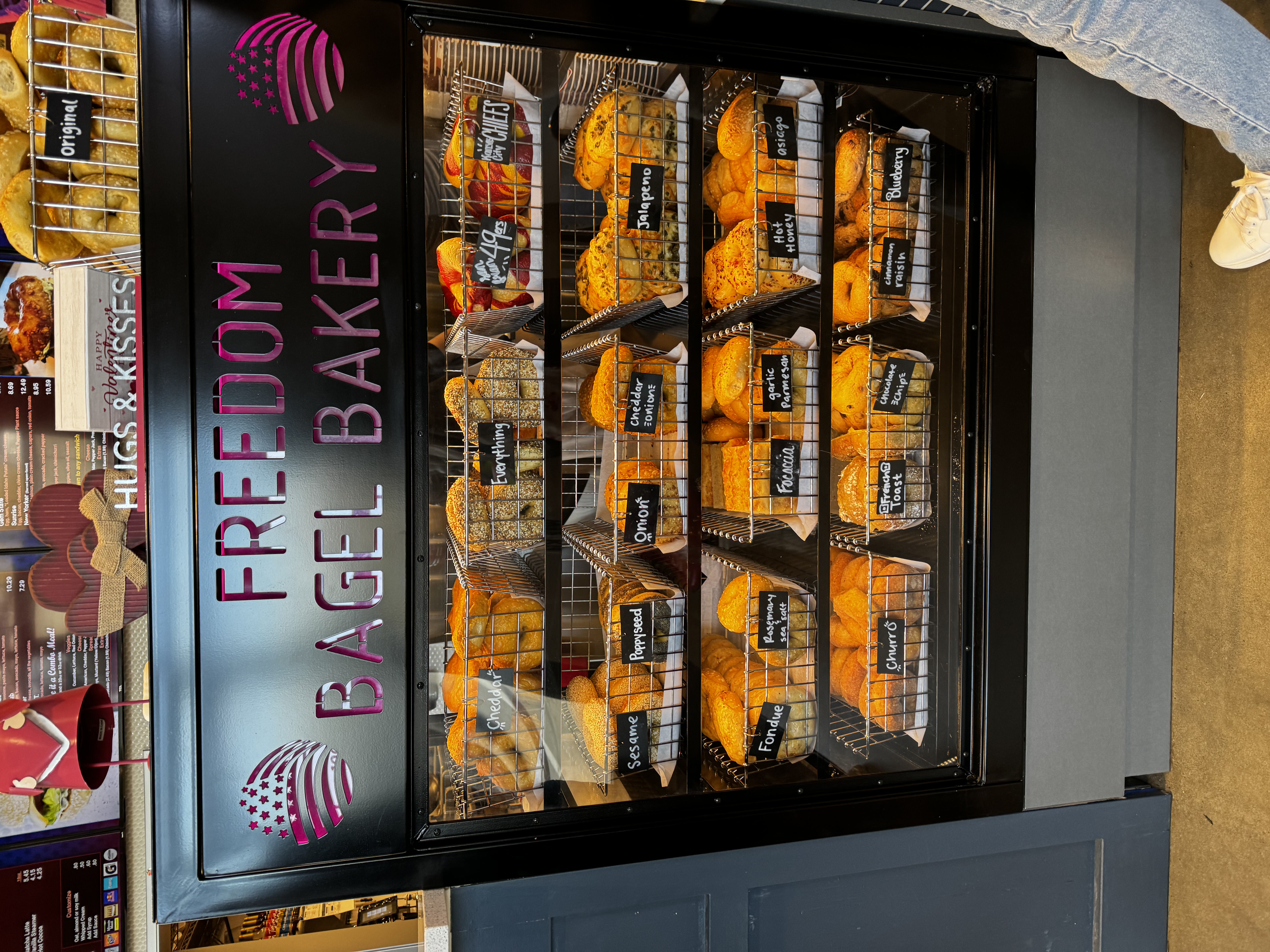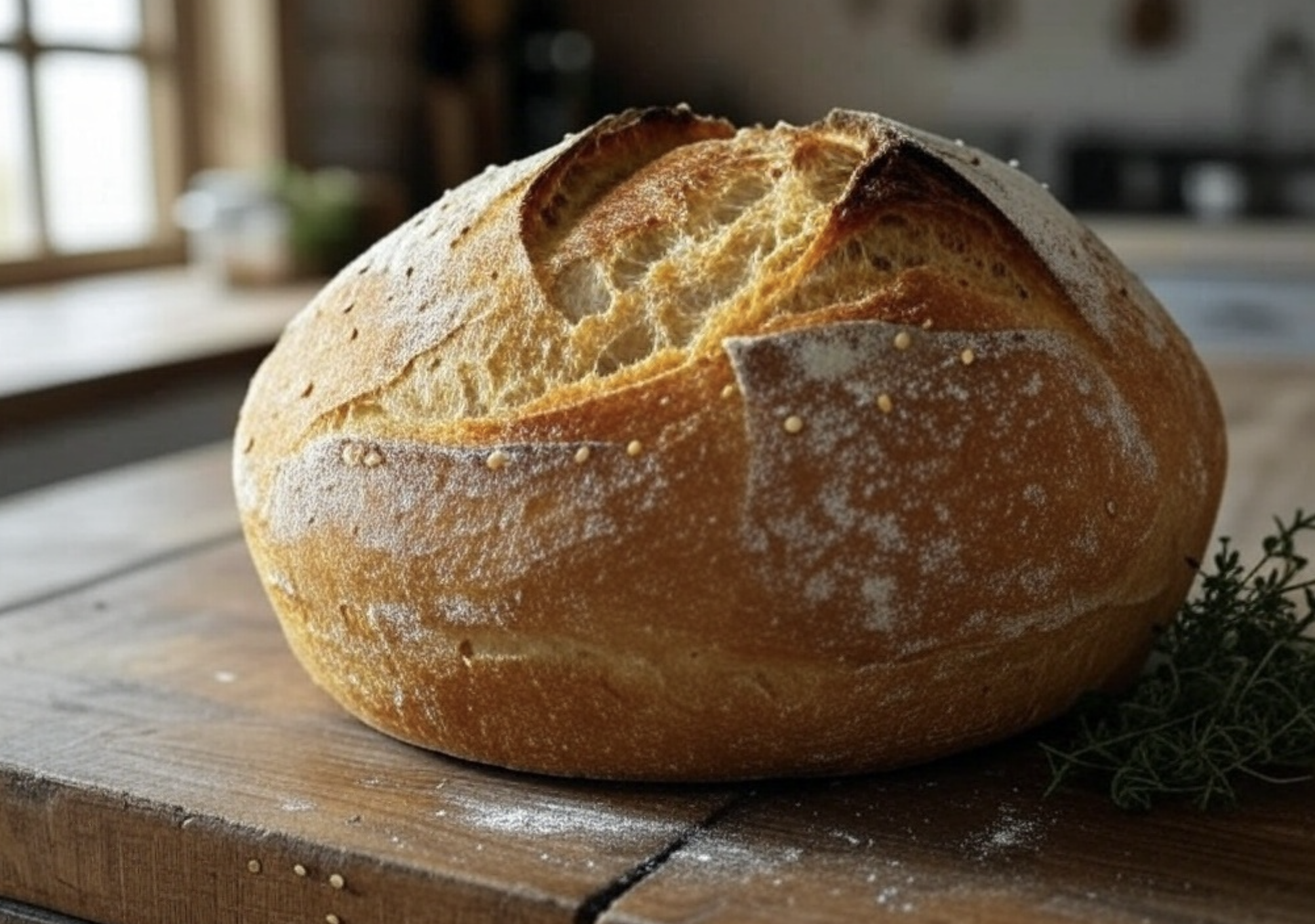Easy Sourdough Recipe Conversion Calculator & Cheat Sheet
Sourdough Conversion Calculator
Transform any recipe into a sourdough version by following the steps below. Start by selecting your recipe type, then enter your ingredients to get a customized conversion.
Recipe Type
Bread, pizza, pretzels
Irish soda bread with baking soda/powder
Pancakes, waffles, crepes
Original Recipe Ingredients
Tip: 1 packet of yeast = 7 grams or 2¼ teaspoons. For flours, you can specify type in notes (e.g., "all-purpose flour", "bread flour").
Sourdough Starter Details
Quick Reference: 100g starter at 100% hydration contains 50g flour and 50g water.
Your Goals & Preferences
Output Preferences
How to Use the Sourdough Conversion Calculator
This calculator helps you transform any recipe into a sourdough version, whether you're converting yeast-based breads, quick breads with baking soda, or even pancake batters.
To build this calculator, I reached out to sourdough experts and leaned heavily on the teachings of Anja Eckert from Our Gabled Home to build the foundation of this tool. Here's how to use it.
- Select your recipe type - Choose between yeast-based, quick bread, or batter recipes. This determines how we'll adjust the ingredients and fermentation process.
- Enter your original recipe ingredients - Add each ingredient with its amount and unit. We'll calculate the adjustments needed for sourdough conversion.
- Specify your sourdough starter details - Include your starter's hydration percentage and whether it's ripe (recently fed) or discard.
- Choose your fermentation goals - Decide if you want flavor enhancement only or the full health benefits of long fermentation.
- Set environmental conditions - Input your kitchen temperature for accurate fermentation timing.
- Convert your recipe - Click the "Convert Recipe" button to get your customized sourdough recipe with fermentation schedule.
The calculator automatically adjusts flour and water amounts to maintain proper hydration when adding starter, and provides step-by-step fermentation instructions based on your goals. You can print off a copy of the sourdough conversion in PDF or click the "copy and paste" button to save it elsewhere.
Watch the video below to see how sourdough conversion works. I built this sourdough calculator based on the exact teachings in this video and I hope I did it correctly. My goal is to give you a "cheat sheet" similar to what's described in the video.
My Sourdough Journey and Why This Calculator Exists
I went through a sourdough phase of my own a few years ago when we were stuck inside the house for a while like so many other people. I found the process of making sourdough to be fun and enjoyable and something I could do with my wife and small children around the house at the time. Although my attempts at sourdough bread never turned out as good as what I found online, I was able to pull off making a few decent loaves of bread that were in fact edible.
Now, I let the experts handle it. One of my favorite places to visit locally is called Freedom Bagels. I much prefer the taste of their sourdough bagels that are made fresh daily. My wife insists on them as well since they do not contain gluten that my wife is sensitive to eating.

Sadly, I haven't made sourdough in a couple years as the pace of life has picked back up, but I do hope to get into it once again.
Converting Recipes to Sourdough
I also learned from Rebecca from Moon + Magnolia, whose YouTube videos taught me about the importance of precision in sourdough baking. As Rebecca explains, "Recipes are often in grams because baking by weight is more precise and it's more repeatable."
Why Choose Sourdough Over Regular Recipes?
As Anja explains, "Here are some of the reasons why people prefer sourdough recipes over non-sour recipes: first of all, I absolutely love the flavor, it's more complex, and it has a slightly sour taste."
But flavor isn't the only benefit. Anja notes, "It's also healthier because oftentimes people with gluten sensitivities do okay with sourdough breads or sourdough goods because the glutens are pre-digested, and the long fermentation neutralizes... phytic acids in the grains."
The Foundation: Understanding Your Starter
Anja stresses the importance of understanding your starter: "Obviously... if you want to bake anything with sourdough that before was a yeast-based recipe or a baking powder, baking soda recipe, you do need an active sourdough starter."
Both experts agree on starter composition. Anja notes, "Assuming that [the starter] is about a hundred percent hydration, it is about 50 percent water and 50 percent flour." Rebecca confirms this, explaining that "Sourdough starter is usually made with 50% flour and 50% water, which makes it a 100% hydration starter." This calculation is crucial for maintaining proper dough hydration when converting recipes.

Common Sourdough Conversion Scenarios
The first step in any sourdough conversion is understanding what you're working with. Anja emphasizes, "If you're looking to convert a recipe, it is always helpful to understand what kind of recipe is it: is it a yeast-based recipe, or is it a quick bread with baking soda... or is it something like pancakes or waffles or crepes? That will also drive what you do next."
Yeast-Based Recipes
| Original Ingredient | Conversion | Notes |
|---|---|---|
| 1 packet yeast (7g) | 100g starter (100% hydration) | Replace completely |
| Flour amount | Reduce by 50g | Accounts for flour in starter |
| Water/liquid amount | Reduce by 50g | Accounts for water in starter |
| Rising time | Double or triple | Sourdough works slower |
Quick Breads (With Baking Soda/Powder)
For quick breads, the conversion is different. You'll keep the baking soda or powder but add starter for flavor and fermentation benefits:
- Add 100g starter and reduce flour by 50g and liquid by 50g.
- For flavor only: Mix and bake immediately.
- For health benefits: Ferment 8-24 hours, then add baking soda just before baking.
- The starter's acidity will activate the baking soda for additional rise.
Batter-Based Recipes (Pancakes, Waffles)
Batter recipes are the most flexible for sourdough conversion:
- Use starter or discard (great for using excess starter).
- For discard recipes: Mix all ingredients and cook immediately.
- For fermented batters: Mix flour, starter, and minimal liquid the night before.
- Add eggs, sugar, and remaining liquid just before cooking.
How the Calculator Works: Core Calculations Explained
Here's exactly how the calculator performs its conversions in this tool.
1. Starter Composition Math
For a standard 100% hydration starter:
- 100g starter = 50g flour + 50g water
- At 100% hydration, equal parts flour and water by weight
- Formula: Flour in starter = Total starter weight ÷ (1 + hydration percentage ÷ 100)
- Example: 100g starter ÷ (1 + 100/100) = 100g ÷ 2 = 50g flour
2. Yeast Replacement Calculation
Converting commercial yeast to sourdough starter:
- 1 packet yeast (7g) = 100g sourdough starter
- Adjust recipe: Reduce flour by 50g, reduce water by 50g
- This maintains the original recipe's hydration level
- Rising time: Multiply by 2-3x (sourdough ferments slower)
3. Recipe Hydration Maintenance
Keeping dough consistency correct:
Original Recipe: 600g flour + 360g water = 60% hydration Add 100g starter (50g flour + 50g water) Adjusted: (600g - 50g) flour + (360g - 50g) water = 550g + 310g Final hydration: 310g ÷ 550g = 56.4% (close to original)
4. Fermentation Time Calculations
Temperature-adjusted timing formulas:
- Base time at 75°F (24°C): 4-6 hours bulk fermentation
- For every 5°F decrease: Add 1-2 hours
- For every 5°F increase: Subtract 0.5-1 hour
- Cold fermentation (fridge): 8-24 hours for flavor development
5. Scaling Adjustments
When scaling recipes up or down:
- Starter amount scales linearly with recipe size
- Fermentation time remains constant (not scaled)
- Salt percentage stays at 1.8-2% of total flour weight
- Hydration percentage is maintained across all sizes
Fermentation Times and Temperature
The calculator accounts for temperature when calculating fermentation times. Rebecca has made some great points about timing when it comes to sourdough: "Baker's yeast was selected and manufactured because it works fast. It takes like an hour or two for your dough to rise." In contrast, she explains, "Sourdough dough usually takes somewhere between 5 and 12 hours for the first rise. It really depends on the temperature of your room, the dough, and the strength of the starter."
Here's a guide to fermentation times at different temperatures to help you stay on track.
| Temperature | Bulk Fermentation | Final Proof |
|---|---|---|
| 70°F (21°C) | 6-8 hours | 3-4 hours |
| 75°F (24°C) | 4-6 hours | 2-3 hours |
| 80°F (27°C) | 3-4 hours | 1-2 hours |
| Cold ferment (fridge) | 8-24 hours | Develops flavor slowly |
Tips for Successful Sourdough Conversions
- Start with an active starter - For yeast replacement, use starter that's been fed 4-8 hours before and is at peak activity.
- Adjust hydration carefully - Remember that 100g of 100% hydration starter contains 50g flour and 50g water.
- Be patient with timing - Sourdough ferments slower than commercial yeast, but the flavor payoff is worth it.
- Consider temperature - Warmer temperatures speed fermentation, cooler temperatures slow it down.
- For beginners - Consider adding a pinch (0.5g) of commercial yeast to ensure consistent results while learning.
- Embrace the unpredictability - As Rebecca reminds us, "Sourdough, because it is wild, sometimes it just kind of does its own thing. Every loaf of bread is a little bit different." This variability is part of the charm and artistry of sourdough baking.
Related Baking Calculators and Tools
If you found this sourdough conversion calculator helpful, you might like these as well:
- Bakery Business Calculator - This calculator will provide valuable insights on your potential revenue, profit margins, break-even point, and return on investment if you want to open your own bakery.
- Recipe Resizing Calculator - Resize your recipe with this tool.
- Baking Conversion Calculator - Enter your recipe ingredients and choose your desired conversion type. This tool handles metric, cups, and imperial measurements, and temperature conversions.
Remember: Sourdough baking is both an art and a science. This calculator provides accurate conversions based on established ratios, but every starter is unique. Use these calculations as a starting point, try things out, and through a bit of trial and error you will be able to make something delicious.
